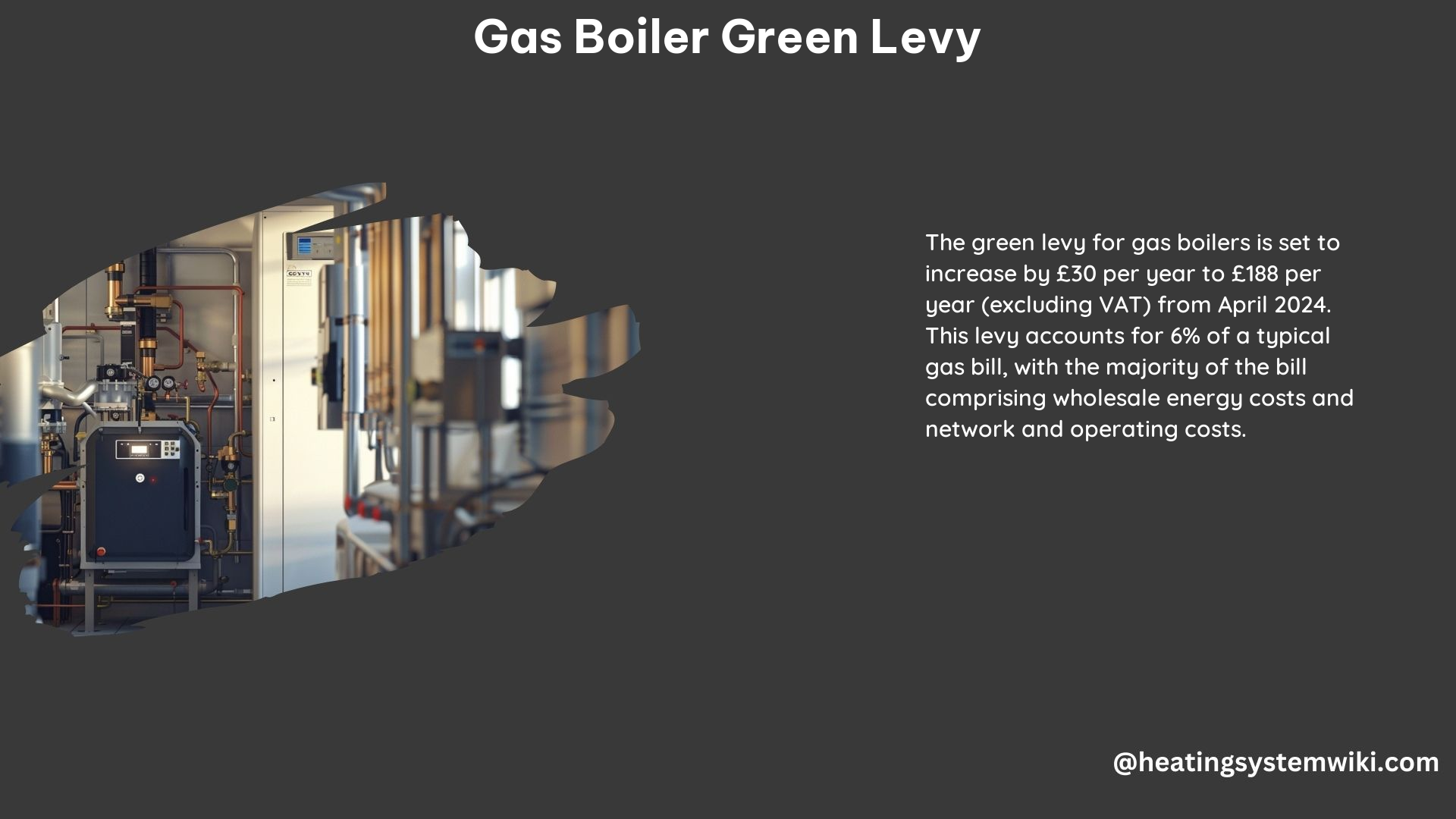The Gas Boiler Green Levy is a crucial component of the UK government’s strategy to reduce carbon emissions from heating systems and promote the adoption of low-carbon alternatives, such as heat pumps. This comprehensive guide delves into the intricate details of this scheme, providing a wealth of technical information to help you navigate the complexities of the Gas Boiler Green Levy.
Purpose of the Gas Boiler Green Levy
The primary objective of the Gas Boiler Green Levy is to incentivize boiler manufacturers to increase their sales of heat pumps, which are considered a more environmentally friendly alternative to traditional gas boilers. This levy is part of the Clean Heat Market Mechanism, a government initiative aimed at decarbonizing the heating sector and reducing the country’s reliance on fossil fuels.
The Clean Heat Market Mechanism requires boiler manufacturers to ensure that heat pumps make up at least 4% of their total annual sales. Manufacturers who fail to meet this target can purchase “credits” from other manufacturers or face a £3,000 fine for each missed sale. This system is designed to create a market-based incentive for manufacturers to prioritize the sale of heat pumps over gas boilers.
Impact on Household Bills

The implementation of the Gas Boiler Green Levy has resulted in an increase in the cost of gas boilers for consumers. Boiler manufacturers are passing on the additional costs to their customers, with some companies imposing a levy of up to £120 on new boilers.
However, critics argue that the increased costs faced by consumers are higher than the actual costs incurred by manufacturers under the scheme. This has led to concerns that the levy may be used as a pretext for boiler manufacturers to raise prices, rather than solely reflecting the true costs associated with the Clean Heat Market Mechanism.
Technical Specifications
Clean Heat Market Mechanism
The Clean Heat Market Mechanism, which underpins the Gas Boiler Green Levy, has the following technical specifications:
- Boiler manufacturers are required to ensure that heat pumps make up at least 4% of their total annual sales.
- Manufacturers who fail to meet this target can purchase “credits” from other manufacturers who have exceeded the 4% threshold.
- Manufacturers who do not meet the 4% target and fail to purchase sufficient credits face a £3,000 fine for each missed sale.
Levy Rates
The levy rate for each financial year is published by the UK government. For the 2024-2025 financial year, the levy rate has already been announced.
Exemptions
Suppliers whose total gas supply comprises at least 95% certified biomethane are exempt from the Gas Boiler Green Levy. This exemption is designed to encourage the use of renewable natural gas as an alternative to traditional fossil-fuel-based gas.
Environmental Necessity
The Gas Boiler Green Levy is a crucial component of the UK’s broader strategy to decarbonize the heating sector and reduce the country’s reliance on fossil fuels. By incentivizing the adoption of heat pumps, the levy aims to increase the proportion of low-carbon heating solutions in the market, contributing to the overall goal of reducing carbon emissions from buildings.
This scheme is part of a comprehensive approach to address the environmental impact of heating systems, which account for a significant portion of the UK’s total greenhouse gas emissions. By encouraging the transition to more sustainable heating technologies, the Gas Boiler Green Levy plays a vital role in the country’s efforts to meet its climate change commitments and achieve its net-zero emissions targets.
